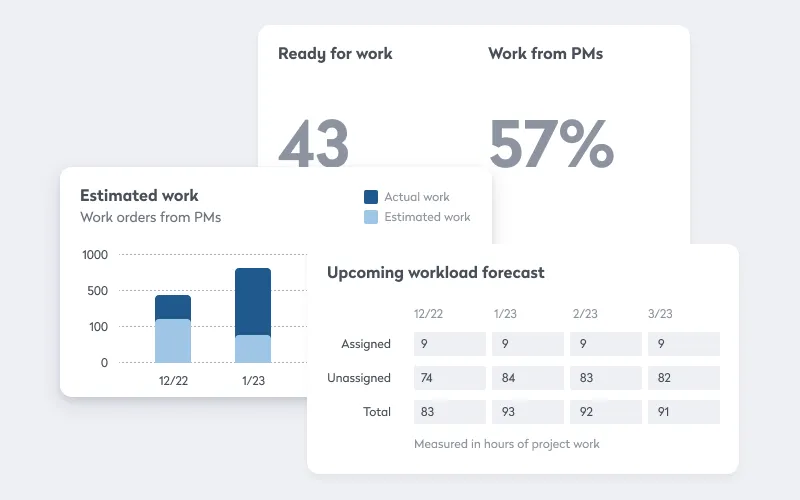
Although organizations tend to associate them with only the middle, modern maintenance departments can deliver value across the asset life cycle. In fact, they can leverage insights into past and present asset performance into better decision-making, from procurement to retirement. But it’s not hands-on experience or gut instinct they’re relying on. Instead, it’s the data they capture through their asset management platform during routine preventive and on-demand maintenance.
Why does this matter for enterprise-level organizations?
Because they have a lot of assets. In fact, enterprise-level organizations dominate asset-intensive industries because of the requirement for significant investments in physical assets to operate effectively.
Asset-heavy industries include:
- Oil and gas: Exploration, extraction, refining, and distribution of oil and gas require substantial infrastructure
- Utilities: Includes water, electricity, and gas utilities, which require extensive distribution networks and facilities
- Manufacturing: Especially heavy manufacturing sectors such as automotive, aerospace, and machinery which involve large factories and specialized equipment
- Construction: Involves heavy machinery and equipment for building infrastructure like roads, bridges, and buildings
- Transportation: Includes airlines, shipping, and freight companies that operate with large fleets of vehicles or vessels
And the more assets a company has, the more important it is to realize value across life cycles. A strong return on investment for one asset class is multiplied across the portfolio, so the larger the portfolio, the bigger the absolute returns. But the opposite is also true. Missed opportunities multiply. Mistakes can cost you many times over.
What is a physical asset?
A physical asset is an integrated collection of components that require maintenance and repair followed by replacement.
Long-life assets
With a service life of more than 30 years, these assets are durable, and they can go decades without needing maintenance or repairs. When they do fail, though, the consequences are high. Examples include metal roofs and concrete slabs.
Medium-life assets
Less durable than long-life assets, these have a service life of between 16 and 29 years. The consequences of failure are usually high, and examples include boilers, fire alarm systems, and exterior lights.
Short-life assets
Less durable than long- and medium-life assets, these typically have a service life of fewer than 16 years. They’re generally smaller, but they get more use. Failure consequences are usually low. Sump pumps are an example.
What is the physical asset life cycle?
But before looking at the individual stages, we need to answer an important question: Does every physical asset pass through the same stages? Generally, the answer is yes. And equally as important, organizations tend to track every type of physical asset, at least on some level, throughout these common stages.
But how much tracking depends on the asset. If you graphed the relationships, the higher the cost and criticality, the more involved and formal the tracking. A small replacement pump, for example, lives at the back of the supply closet, and you won’t think about it until you need it. But for an asset like a boiler, there’s a long process where you decide you need one, choose the replacement, and then plan out all the steps for installing it. Then you create a maintenance program with associated inspections, tasks, and key performance indicators (KPIs).
The life cycle stages for physical assets are:
- Acquire
- Utilize
- Maintain
- Dispose and replace
Stakeholders understand and appreciate the maintenance department’s role in the middle two, so it’s important here to focus on the first and last stages.
Asset life cycle: acquire
Here, the organization realizes it needs a new asset and decides which one to get. The maintenance department can help in three specific ways.
Because they’re maintaining and repairing the assets, maintenance has a good idea of the real current capacity. Take a manufacturing plant, for example. Theoretically, the assets already in place can produce X number of items every Y number of hours. But to calculate the real, practical output, the organization needs to know the uptime and downtime numbers, which the maintenance team tracks asset and facility management software.
Or, the organization has decided it needs a new asset, and it is now looking at different manufacturers. Again, because they’ve worked directly with the current physical assets, the maintenance team has a sense of the existing reliability. If you’re always having issues with an asset from Company A, you can steer your organization toward Company B.
And it’s more than just how often you repair an asset. It’s also how easy it is to complete the repairs. The maintenance department knows which companies have the best documentation, support, and warranties.
Part of setting up the asset management database is loading in all the support documents, so the department has a sense of which companies have the best documentation. And because the software helps them automate some parts of the purchasing processes, it’s easy to check current lead times. They can see which assets are going to be the easiest to keep in parts and materials.
Even the most reliable assets and equipment eventually need to be inspected, maintained, and repaired. So now the question is how easy it is to do the work. Again, just from having the right data, maintenance technicians can see which assets are going to present more challenges.
And these challenges can add a lot of time, energy, and safety concerns to maintenance and repairs. An example that affects fleet managers: On most cars, checking the fuel filter should take about ten minutes. But there are some models where technicians must jack up the car, crawl underneath it, and remove the floor plates to get to the filter. Routine maintenance on those cars now demands more time and training.
A modern maintenance management platform lets you pack lots of data into both on-demand and preventive maintenance work orders, including customizable checklists and step-by-step instructions. When you want to know which assets are the most difficult to maintain and repair, there’s a good chance all you need to do is check the length of the instructions in the average work order.
You could also check which work orders have the most task comments. Because there are many different reasons a tech would attach comments to a work order, it’s not an exact science. But if the work orders associated with an asset have a lot of back-and-forth comments, it suggests it’s a bit trickier to fix.
In the end, because they know which assets are needed, which companies to trust, and what to look for in an asset, the maintenance department and the reliable data it tracks using the software adds a lot of value at the acquire stage.
Asset life cycle step: dispose and replace
As an asset approaches the end of its useful life, the organization needs to decide when to replace it. The calculation is simple in theory. At some point, it costs more to repair the asset than to replace it. In practice, though, much of the data looks like moving targets, making it tough to know exactly when to start.
The maintenance team can help make things easier by looking at the associated costs it’s tracking through the asset management platform. Because the department is capturing and keeping reliable data on an asset’s associated downtime, parts and materials, and labor, the maintenance team can provide a clear picture of the cost of keeping an asset up and running. With those insights in hand, the organization can more accurately decide when to dispose of and replace an asset.
But that’s not the only way the maintenance department can help an organization make these decisions. And that’s because there’s more than one reason to replace an asset. In some cases, organizations replace assets that are working perfectly.
In some cases, it’s because of new regulations. For example, a lot of older HVAC systems used deprecated gases governments are phasing out. Now, unless you can retrofit your old HVAC systems, you need to replace them.
In other cases, organizations replace assets because they can get better, more efficient models. For example, a company might replace all its older boilers with more energy-efficient ones. Here, they’re not looking at the maintenance costs. Instead, the deciding factor is all the money they can save plus the opportunity to meet stricter sustainability goals.
Imagine you have a room full of typewriters. They work perfectly and suit your organization’s needs. Best of all, you’re not worried about finding people to maintain and repair them. That’s because your modern maintenance solution holds all your critical asset data, including:
- Associated parts and materials
- Digital images, OEM manuals, and warranties
- Customizable checklists
- Step-by-step instructions
Thanks to those last two, most techs in the maintenance department can figure out how to work on the typewriters.
But what you are worried about is parts and materials. How much longer will you be able to buy ribbons? And when a part breaks, how quickly can you track down a replacement?
When you see that sourcing parts and materials is going to be an issue, the lead times are getting longer, and the list of reliable suppliers is getting shorter, you can warn your organization that it’s time to start looking to dispose of and replace those typewriters.
The maintenance department can make important contributions to the organization at every stage of the asset life cycle. And it can do even more with the right facility and asset management software solution.
In the end, modern maintenance departments are pivotal throughout the entire asset life cycle, not just during the middle phases. Armed with data from their asset management platforms, which is gathered during routine preventive and on-demand maintenance, these departments can leverage insights from past and present asset performance into informed decisions on both what to buy next and when to buy it. That maintenance and operations teams can offer so much to the enterprise emphasizes the critical role of data in enhancing asset management and operational efficiency.







